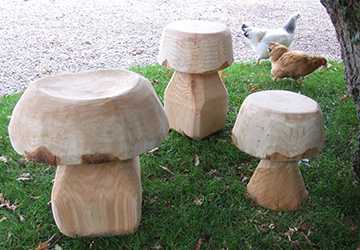Roses – they're like the crown jewels of the garden world. Their beauty and fragrance can turn any ordinary garden into a stunning paradise. But how do you ensure your rose garden blooms with vigor and charm? Don't worry; you don't need a green thumb or a degree in botany. In this simple guide, we'll walk you through the steps to grow a beautiful rose garden.
Whether you're a newbie gardener or a seasoned pro, we've got you covered. From choosing the right roses to tending to their every need, we'll break it down for you. So, grab your gardening gloves, and let's get started on this flowery journey.
Choosing the Right Roses
Before digging up your garden, you need to decide which roses you want to grow. There are thousands of rose varieties, but don't let that overwhelm you. We'll help you narrow it down.
Climate Matters: Roses are picky about where they live. Some love the heat, while others thrive in cooler climates. Check your hardiness zone to know what suits your area best.
Type of Roses: Hybrid teas, floribundas, and shrub roses are three main types. Hybrid teas are known for their classic beauty, floribundas for their continuous blooming, and shrub roses for their hardiness. Choose according to your preference.
Color Palette: Roses come in a rainbow of colors. Think about what shades will complement your garden's theme. Classic reds, soft pinks, or sunny yellows – it's all up to you.
Fragrance: Some roses are fragrant, while others are not. If you want your garden to smell heavenly, opt for scented varieties.
Size: Roses vary in size, from compact miniatures to towering climbers. Make sure your garden has enough space for your chosen type.
Picking the Perfect Spot
Just like people, roses have preferences, too. Choose the right spot in your garden to keep them happy and blooming.
Sunlight: Roses are sun worshippers. They need at least six hours of direct sunlight daily. So, pick a spot that gets plenty of sunshine.
Soil Quality: Roses like well-drained soil that's rich in organic matter. You can amend your soil with compost to make it rose-friendly.
Air Circulation: Good air circulation helps prevent diseases. Don't crowd your roses; give them some breathing space.
Protection from Wind: While they love fresh air, strong winds can be harsh on roses. Plant them near a windbreak like a fence or a wall.
Planting Your Roses
Now that you've picked out those perfect roses and found the just-right spot, it's time to roll up your sleeves and dive into the fun part – getting your hands a little dirty!
Dig a Hole: Start digging a hole roughly twice as wide as your rose's root ball. Ensure it's deep enough to snugly hold the roots without bending or overcrowding.
Soil Enrichment: Spruce up the soil you excavated using compost or well-rotted manure. This not only provides a buffet of nutrients but also improves drainage, keeping your roses happy.
Planting Depth: Pop your rose into the hole, ensuring that the graft union (that knobby part where the rose meets the rootstock) sits just below the soil level. Gently backfill with soil and pat down it to settle things in place.
Water with Care: Treat your freshly planted rose to a good soak of water. This helps the soil cozy around the roots and gives your rose a welcoming start in its new home.
Caring for Your Roses
Your roses are in the ground, but don't kick back just yet – they're the beautiful, high-maintenance type. Here's the lowdown on keeping those blooms happy:
Watering Wisely: Roses appreciate consistently moist roots but not a full-on waterlogged situation. Aim for deep watering right at the base of the plant, avoiding any leafy showers to prevent diseases.
Mulch Magic: Spread a comfy blanket of mulch around your roses. It locks in moisture, maintains the soil temperature, and thwarts the weedy invaders. Opt for organic mulch like wood chips or straw for bonus points.
Pruning Party: Throw a pruning party for your roses in late winter or early spring. Trim off the dead or sickly branches and shape the plant to your liking. Pruning is the secret sauce for new growth and proper air circulation.
Food Time: Show your roses some love with a balanced rose fertilizer in the spring as they stretch their legs again in late summer. Follow the instructions on the package to ensure you're treating them just right.
Battle Plan: Keep an eagle eye out for common rose foes like black spots and aphids. If necessary, unleash the appropriate treatments, but start by choosing rose varieties with built-in disease resistance – it makes your gardening life a whole lot easier.
Blooming Beauty: Regularly trim off those spent flowers to give your roses a nudge to produce more gorgeous blooms. Snip them right above the first five-leaflet leaf, and your roses will thank you with a bouquet of fresh buds.
Support System: If your roses reach for the sky or get a little too clingy (we're looking at you, climbers), provide them with some sturdy support like trellises or stakes. It keeps them from flopping over in the middle of their big show.
Enjoying Your Rose Garden
After all your hard work, it's time to sit back and relish the beauty of your rose garden. Here are some tips for maximum enjoyment:
Take It All In Spend time each day simply admiring your roses. Their colors, shapes, and fragrances are a feast for the senses.
Cut Bouquets: Don't be shy about cutting a few blooms to bring inside. Freshly cut roses in a vase can brighten up any room.
Share the Love: Roses make fantastic gifts. Share your surplus blooms with friends and neighbors, and spread the joy.
Conclusion
Growing a beautiful rose garden isn't rocket science; it's a labor of love. With the right roses, a sunny spot, and a bit of care, you can create a floral masterpiece that will bring joy and beauty to your life. So, don't be afraid to get your hands dirty and start your rose garden journey today. Remember, every rose has its thorns, but the beauty they bring is worth every bit of effort. Happy gardening!




